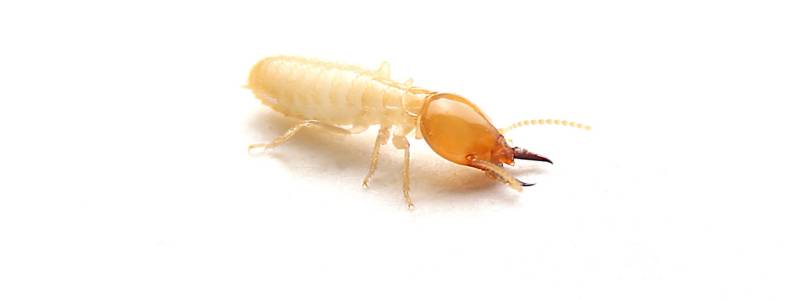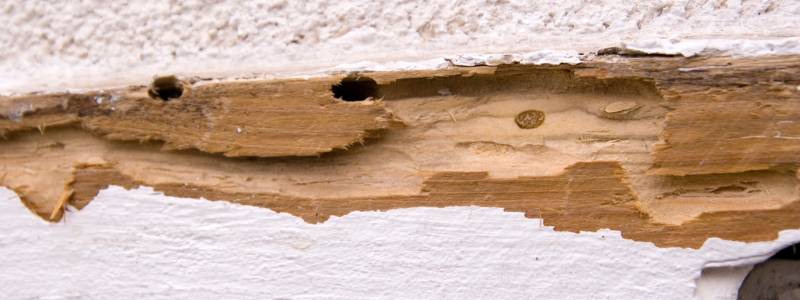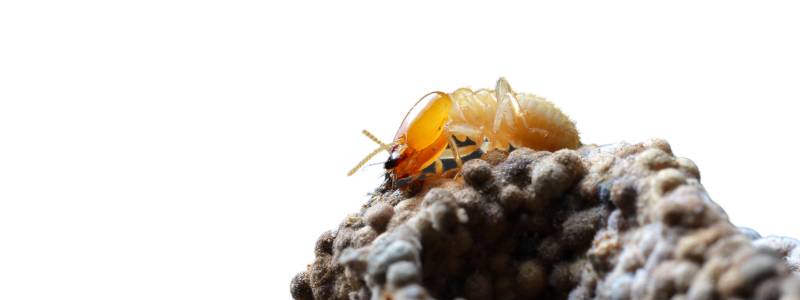Reasons You Need a Termite Barrier to Protect Your Home
6 Ways Barriers Help Protect Against Termites
If you’re a homeowner, you know protecting your investment is a top priority. One of the biggest threats to the structural integrity of your home? Termites. These tiny insects can cause thousands of dollars in damage if left unchecked. That’s why a barrier is so important for properties in termite-prone areas.
What Are Termite Barriers?
A termite barrier is a physical or chemical barrier installed around your home’s foundation and other vulnerable areas. These barriers are designed to prevent one of the most common household pests from getting into your home’s wood structure to nest and feed. This type of termite management system creates a protective “moat” that disrupts and blocks termites’ ability to reach your house.
There are three main types of barriers:
Physical Barriers
Physical termite barriers involve installing a physical obstruction made of a termite-resistant material around the interior or exterior perimeter. Some examples include:
- Stainless Steel Mesh: A mesh screen made from stainless steel fibers is buried in the soil. Termites can’t get through the durable woven stainless mesh.
- Sand Barriers: Special sand particles (with particle size larger than termites can move) placed in the soil blocks entry.
- Gravel Barrier: Using layers of fine gravel like the sand barriers.
Physical barriers provide good protection on their own, but work best when combined with a chemical treatment or termite bait system.
Chemical Barriers
Chemical-based barriers involve treating the soil around your home with liquid termiticides. These create a chemical zone lethal to help stop termite activities. Termiticides are applied via trenching, injection, or rodding. The protection they offer can last 5-10 years if applied correctly.
Some common examples of chemical termite barriers are:
- Termidor – One of the most widely used liquid chemicals. It contains fipronil. It is applied by digging trenches around the base.
- Premise – Premise has the chemical imidacloprid in it. It creates a barrier when injected into the dirt.
- Phantom – Contains chlorfenapyr, a chemical termites don’t notice. It is put in by drilling, digging trenches or injecting under the foundation.
- Altriset – Contains chlorantraniliprole. It is installed by trenching or drilling.
- Premise Foam – This special foam version of Premise can get into places regular liquid can’t, like hollow blocks.
- Bora-Care – A powder with sodium borate is put into cracks and voids in the walls to kill termites.
- Vikane – Sulfuryl fluoride gas is the ingredient in this tent fumigation.
Always hire a professional pest control company when using toxic products. They know how to pick, apply, and install the right termiticides for your home. They can choose the best solution for how your house is built and termites in your area.
Termite Bait Stations
Bait stations lure termites in to feed on bait laced with slow-acting toxins. The termites then spread the toxins throughout their colony. Bait systems are less disruptive to install and more environmentally friendly.
Why Your Home Needs a Termite Barrier
1. Termites Cause Major Damage
These tiny pests can chew through wood, flooring, drywall, wiring, and more, causing huge problems that leads to costly repairs. A termite infestation often goes undetected for years while they secretly destroy wooden elements from the inside out. Don’t be fooled by their small size. Termites can knock down entire homes!
2. Termites Are Common in Many Areas
Termites need moisture and cellulose (wood) to survive. So they thrive in warm, humid climates across the southern states and up along the coast. However, termites can be found almost everywhere. Take a look at a termite zone map, and you’ll likely see you live in a high-risk area.
3. A Barrier Is Your First Line Of Defense
Trying to eliminate an existing infestation is extremely difficult and expensive. This kind of termite treatment prevents the destructive insects from ever reaching your home in the first place. It’s a proactive step that saves you headaches down the road. Prevention is key with termites!
4. Termites Often Go Unnoticed
These sneaky bugs tunnel and nest out of sight. It can take up to 3-8 years of gradual destruction before any visible signs appear. Don’t wait for sagging floors or swarmers. Take preventative action. Carry out a termite inspection and then block these critters before real damage is done.
5. Barriers Protect Your Investment
Your home is probably the most valuable thing you own. It’s important to protect your investment. Termites can secretly damage your home without you seeing. This lowers your home’s value too. This is why termite risk management is a required in acceptable construction practices. Install preventative device to avoid this hidden damage. Don’t let termites silently eat away your home’s worth!
6. Treatment Without a Barrier Is Not Enough
Just using pest control sprays or powders is not a full solution. Even after killing them, new termites can come back if nothing blocks them. Barriers stop this. Barriers make pest control treatments more successful. The barriers keep new termites out for good after the treatment kills the current ones. Pest control + barriers give full protection.
Key Takeaways
- Termites cause major, expensive damage to homes if left unchecked.
- Different types of termite barriers and chemical treatments can block termites.
- People living in warm, humid climates especially need these barriers.
- Barriers prevent infestations before they start and protect your investment.
- Combine barriers with extermination for complete termite protection.
Investing in annual inspections and a professional termite barrier is the best way to protect your most valuable asset. Safeguard your home from these destructive invaders!
FAQs
How much does a termite barrier cost?
Termite barriers cost $1,200-$3,000 on average. It depends on your home’s size and the type of barrier used. Inspections each year are $75-$150.
How long does a termite barrier last?
It depends. Metal mesh barriers can last over 50 years. Chemical treatments usually last 5-10 years.
Do I need a barrier if I’ve never seen termites?
Yes! Termites cause damage long before you see any signs. Be proactive and get a barrier before an infestation starts.
Does homeowners insurance cover termite damage?
Most regular policies don’t cover termites. You need special termite insurance.
When is the best time to install a barrier?
For chemical treatments, spring and summer when termites are out is best. Barriers made of physical products can be added at any time.
Conclusion
There you have it. I hope this breakdown gave you a better understanding of termite barriers and why every house needs one installed. Don’t wait until it’s too late. Be proactive against termite destruction and enjoy peace of mind. Protect your valuable investment with an effective barrier solution. Be sure to add regular professional inspections to your barrier for full termite protection. Keep checking for these annoying pests.



